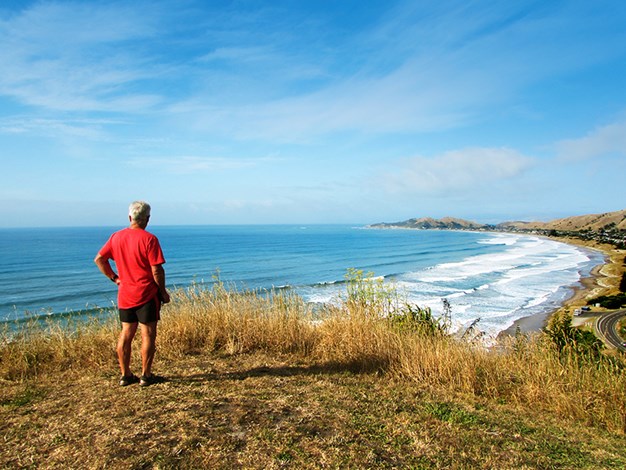 |
|
On the Wainui Makorori Headland |
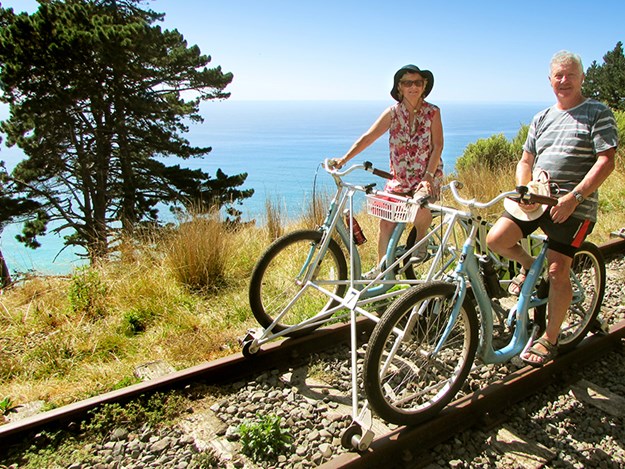 |
|
The bikes were easy to use |
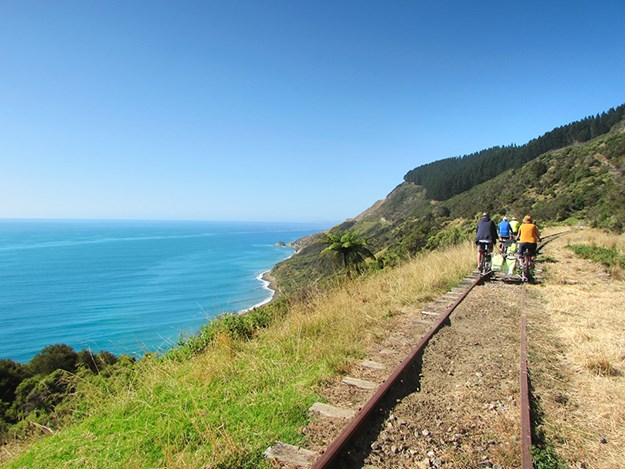 |
|
Clifftop views |
Historic Gisborne
Gisborne City began its life as a commercial centre in 1831 when 23-year-old John Harris set up a trading post. Soon the port was thriving, as local Maori grew potatoes, flax and wheat for export. Maori had sailed from Polynesia and settled in the area more than 650 years ago, naming their new home Turanga. Links to their seafaring heritage can be seen at the small harbour on the Esplanade where two double-hulled sailing waka are moored. The Tahitian waka Fa’afaite is in Gisborne following last year’s Tuia celebrations, while the waka hourua Tairāwhiti offers cultural and sailing trips. This is on the bucket list for our next visit. Gisborne is famously the first place in the world to see the light of the new day. It is also famous for its surf beaches, having some of the best breaks in the country, but for non-surfers there are lots of other options, such as parks, walkways and cycle paths. The i-SITE has plenty of brochures – we found a short walk in one that took us to the top of the Wainui-Makorori headland. We didn’t get there early enough to see the sunrise but we did have great views, especially to the south over Wainui Beach to Tuahine Point and Young Nick’s Head. We also strolled along Gisborne’s palm tree-lined main street, Gladstone Road, towards the art deco clock tower, with a stop for lunch at one of the many cafes and a lengthy peruse through the bookshop.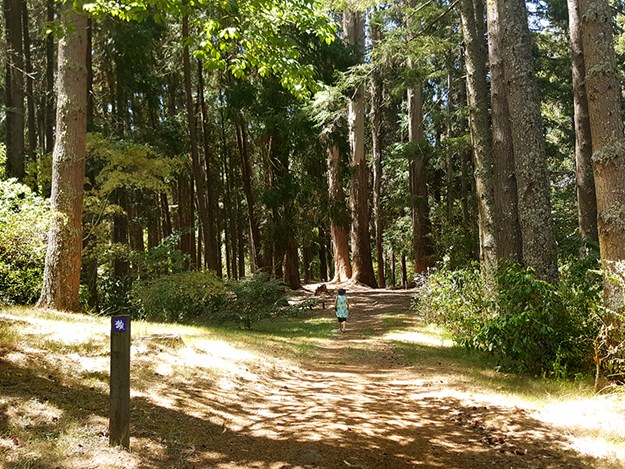 |
|
Entering ‘the Cathedral’ |
Beautiful Botanics
There are more walks at Eastwoodhill, New Zealand’s National Arboretum, a 30 minute drive from Gisborne. The arboretum boasts more than 25kms of walking tracks looping around its 100 hectares, allowing visitors to discover over 3500 different trees, shrubs and climbing plants. The arboretum is home to the largest collection of Northern Hemisphere trees south of the equator as well as many species of native and exotic birds. The arboretum began in 1910 when Douglas Cook bought the farm he called Eastwoodhill. Cook spent the next 50 years expanding the plantings before selling the arboretum to H B (Bill) Williams. The Williams family gifted Eastwoodhill to the people of New Zealand and it is now administered by a trust. We picked up a map in the visitor centre and decided to follow the 3km purple walk (the six trails have coloured leaf signs to keep you on track). This took us along some of Eastwoodhill’s higher ground and gave great views of the arboretum. As the track zigzagged down we came to a Canadian-style cabin with a sign that told us that it had been used as accommodation for naturists in the past, and that Douglas Cook used to keep a supply of sherry here, so his guests could stop for a glass on their walks.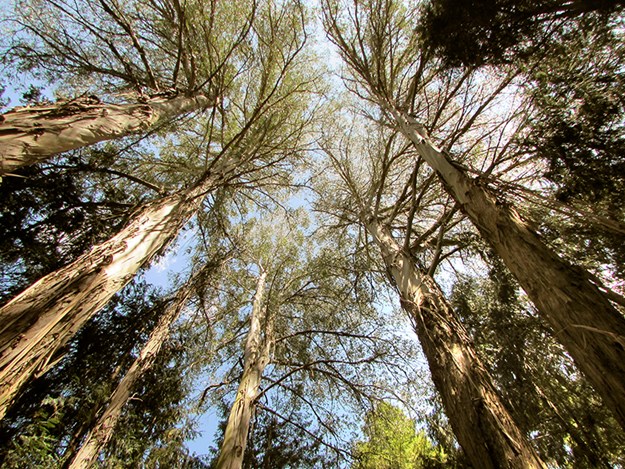 |
|
Magestic trees at Eastwoodhill |
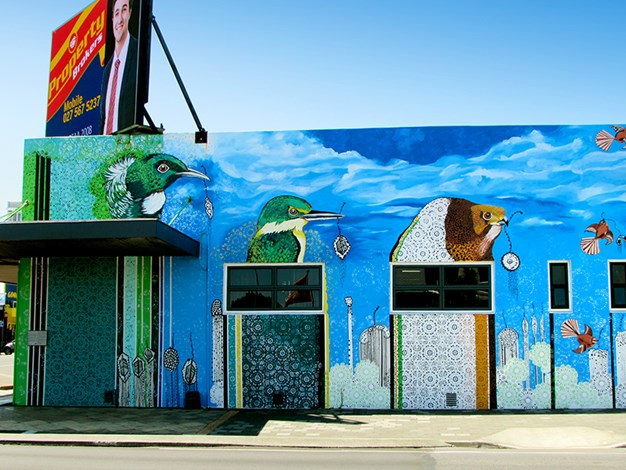 |
|
Gisborne street art |
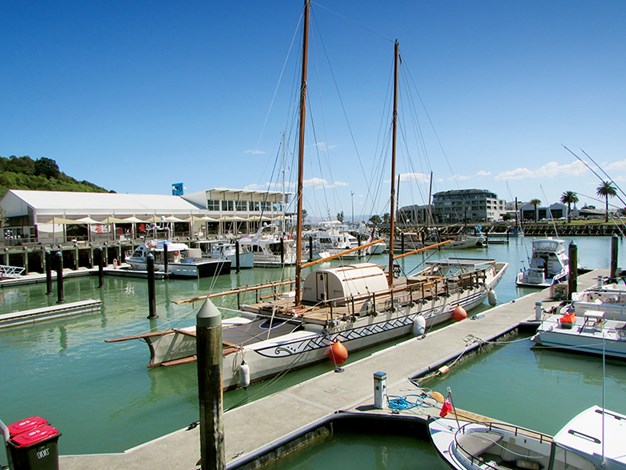 |
|
The waka Fa’afaite with Tairawhiti in the background |
Free fun
If you turn right when you leave Eastwoodhill and drive about 10 minutes further along the Wharekopae Road there’s a sign for Rere Falls. This pretty waterfall is not high but it is wide – and when there is plenty of water pouring over it you can walk behind the cascade. There’s a swimming hole and picnic area too – but we didn’t stay long because we wanted to see the ‘world famous in New Zealand’ Rere Rockslide, just a little further up-river.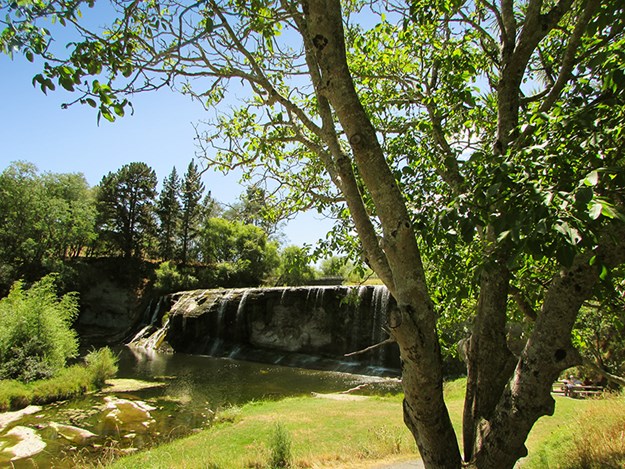 |
|
Rere Falls |
Relax in seclusion
We prefer our water activity to be a bit more sedate so, when we left Gisborne, we stopped at the Morere Hot Springs on SH2 where, after walking through shady palm-filled rainforest we relaxed in the hot pools. Morere’s water has been called ‘fossilised sea water’ because of the length of time it has been underground before bubbling to the surface. Visitors have enjoyed calming, therapeutic soaks at Morere since the 1890s and it’s quiet, green ambience was the perfect end to a fun filled, but tiring, exploration of Gisborne.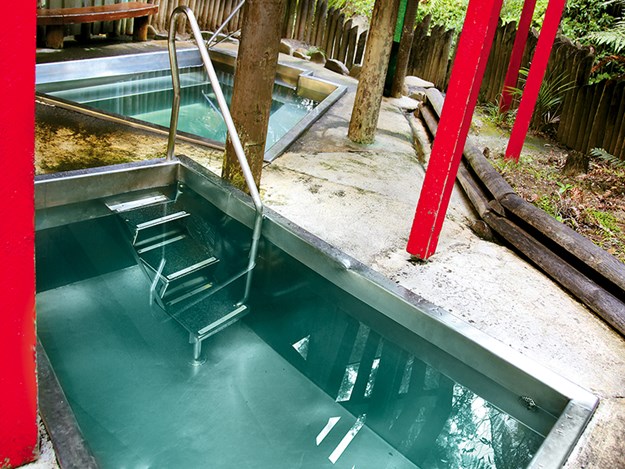 |
|
Morere Hot Springs |





